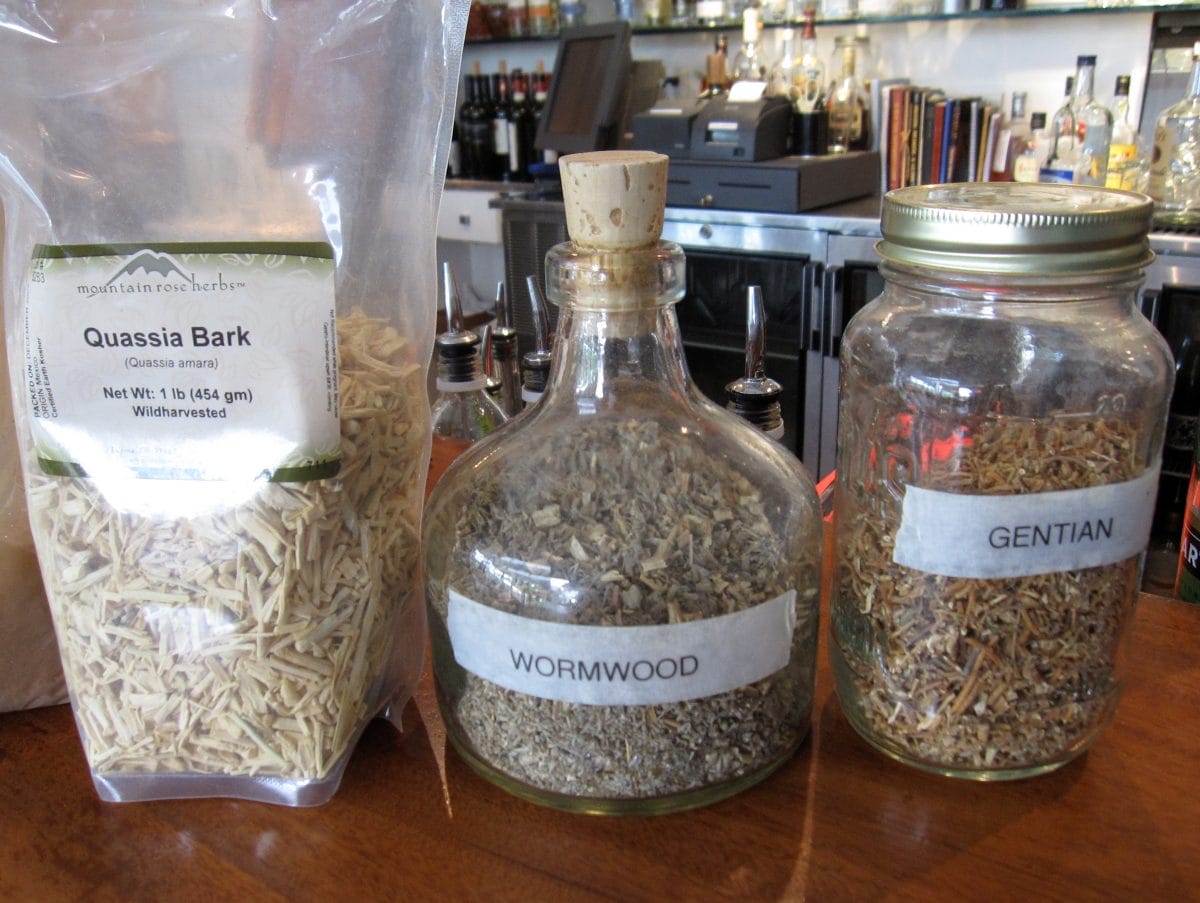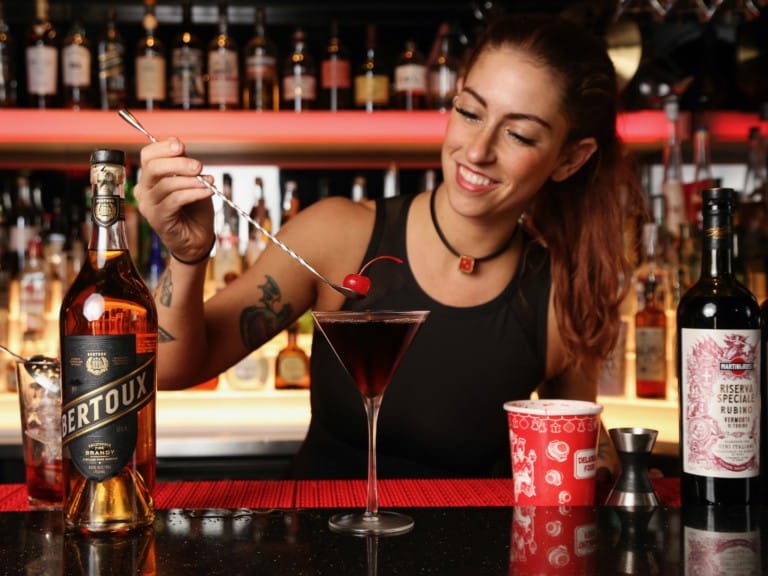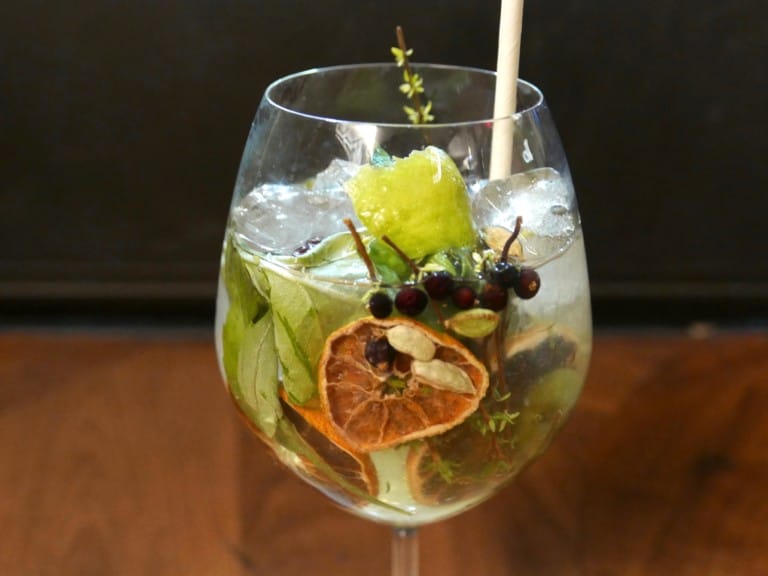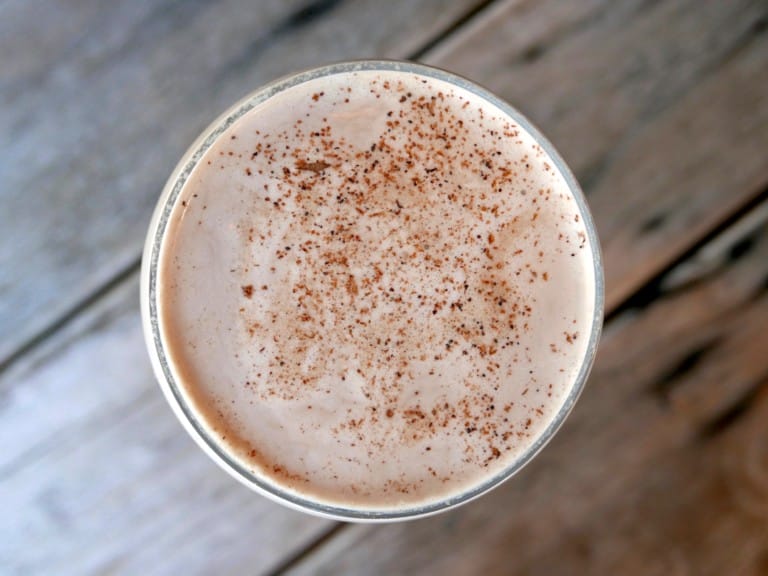Several L.A. bartenders are inspired by farmers markets. Others incorporate molecular elements. Justin Pike charted a different path, drawing on pre-Prohibition traditions to produce his own bitters, liqueurs and other “medicinal” ingredients. Pike grew up in a Connecticut “cow town” called Coventry before moving to Boston to attend the Massachusetts College of Art and Design. While he was studying illustration, Pike bartended at Cuchi Cuchi, a Prohibition style bar in Cambridge. He transitioned across country, landing at Clyde Common and clarklewis. He’s been working at The Tasting Kitchen since September. We met at the Venice restaurant before the start of his shift and Pike discussed his background and approach.
How did this opportunity come about?
I worked with the sous chef and our manager at clarklewis. They called and said they’d like to have someone else who has that Portland mentality.
What’s your approach with The Tasting Kitchen cocktail menu?
We started with very limited space on the actual menu, just in terms of what we could write down. At first we try to gear towards the sort of person is maybe not as adventurous, not as into the cocktail scene. For instance, The Prelude here, vodka, tonic, cucumber, is very simple. It’s a house made tonic, which is the highlight ingredient. And then going in more adventurous drinks, for instance, The Bishop, where you have Broker’s Gin, maraschino, gentian and Bonal, which is a newer spirit – I’m not sure if you’ve heard of that one.
No, I hadn’t heard of that one before.
We just got it in. I try to find stuff that’s going towards bitters and hard to find liqueurs. As I was saying on the phone the other day, things that have more dimension than one thing. This is an attempt by a newer producer to make gentian lillet. Quina is an herb wine that was popular in the early 1900s, used in gin drinks and that sort of thing, kind of like lillet, but more herby, where they put gentian, which is over here (points to container of the herb), which is typically used in bitters.

So you use these ingredients on the bar to produce your own bitters and liqueurs?
Right now, we’re doing a house kola with South African kola nuts.
[Pike holds up a bottle.]
This is an orange pistachio syrup. We were making falernum for a long time. Falernum’s in rum drinks, which is almond, with clove and cinnamon. This one’s sort of playing with that idea, but using other nuts and other citrus instead of the more classic style. We’re also just making classic bitters, like dashing bitters. You see this more commonly at bars, starting with grapefruit bitters, cherry-vanilla, currant-anise, house bitters, and then even trying to get Angostura down, looking to old books. A lot of the bars that we go to, separately, are making these kinds of things again. At one point before Prohibition, bartenders made all of these things themselves. You would the make the syrups, you would make the bitters, and in large quantities.
Does it change your approach, that The Tasting Kitchen has food?
It certainly does. One of the best things is to pair a cocktail with food.
What’s a cocktail pairing that’s currently possible on the menu?
This halibut is vermouth and butter poached halibut, a light fish with a little crème fraiche on top, beans and summer squash. A customer said, “Can you pair a cocktail.” I thought, well there’s vermouth, so if I do a gin martini style drink, a very wet style drink, which is what I did. Aperol, gin, dry vermouth, maybe a dash of something.
One drink that jumped out at me was the Whiskey Paddle with fermented beet molasses and Becherovka?
That’s a really interesting liqueur from the Czech Republic. It has a very Christmas-y characteristic to it. It still goes to bitters. The main difference between a bitter and a liqueur would be complexity, but also being bitter. If you think of tea, a bittering agent would be like a green tea, and then you’d throw in say, lemon peel and cinnamon to give it nuance and roundness. You’d do the same thing with bitters, whether you’re using wormwood, let’s say – and we all know wormwood from absinthe – then one of the ones that’s also used is quassia bark. Chincona’s the one that’s used in tonic, and that’s how you get quinine, since it naturally contains quinine.
Where do you go about sourcing gentian and wormwood?
A lot of these, certainly online, there are some really large websites. I think Mountain Rose Herbs is where I got a lot of these last batches. Some of this stuff, I do a bunch of old research in these old books, which are now harder to find. Not even knowing what acacia powder is, you find out it’s gum Arabic, which was used a lot more commonly earlier. A lot of this is just going down to the herb shops. This is what I did the other day, and I haven’t had a chance to play with these yet.
Why do you describe your cocktails as “medicinal”
A lot of early liquor making was by religious monks, partly because they could make money off of it, but partly because there was part of it that had roots in medicine. If you look at a lot of these old liquors – say Chartreuse – which is still made by monks, and they pride themselves on techniques that have been passed down through generations. Even through Fernet, these are used for coating the stomach or curing ailments, that sort of thing. Even the idea of the apothecary, in New Orleans, let’s say, and someone would come in and have tinctures and such, claiming to cure whatever ailment you had.
Has anybody asked you for a diagnosis behind the bar yet?
Definitely. It’s one of those things when anybody who has a few drinks will feel better.
Would you consider yourself a bartender or mixologist?









Blog Comments
Chris Mullins
October 10, 2011 at 3:55 AM
I am going to try making the French 75 you recommended. What an interesting approach you take to mixing. I’m really impressed.
Organic Jungle Blog
September 16, 2010 at 6:21 AM
Quassia Bark Powder…
[…] ich is almond, with clove and cinnamon. This one’s sort of playing with that i […]…
Maria O
June 19, 2010 at 12:32 PM
Your interview was so interesting. Once an artist, always an artist! I will have to try one of your medicinal drinks one of these days.
In the City: Restaurant Daniel, New York City
June 16, 2010 at 9:28 AM
[…] Food GPS » Q&A with mixologist Justin Pike (The Tasting Kitchen) […]
Susan
June 12, 2010 at 3:51 PM
Amazing interview!